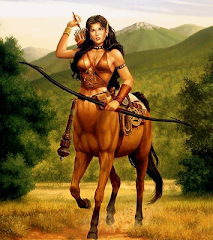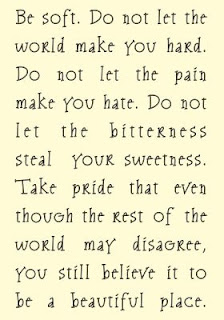I don't have children, but if I did I would teach them to know the difference between the secular Easter Spring Celebration and Jesus' Resurrection Sunday. I personally take no issue celebrating them both, my motto is to each his or her own, live and let live. But it is important to understand the difference between the two. The Easter Spring Celebration is a pagan secular ritual and Jesus' Resurrection Sunday is Holy. It was the Catholic church that integrated them both into one. There is no mention of Ostara, the goddess of Spring in the Bible nor is there any mention of the word Eostre aka Easter.
***************************
[source: Goddess cards]
Ostara is the Anglo-Saxon goddess of Spring. Her other name is "Eostre" meaning "movement towards the rising sun." She is celebrated on March 21st at the Spring Equinox, when days are brighter and growing longer. She points the way to Beltane, the great and joyous festival of coming Summer.
Ostara is a fertility goddess, the northern counterpart of Astarte and Ishtar. She is associated with the moon hare or rabbit, with eggs, dawn and the east - all symbolizing her primary qualities of bringing birth, rebirth and renewal to a winter-weary world.
In modern times, we have transformed Ostara's sacred rabbits and eggs into the secular Easter bunny, and colored and chocolate Easter eggs that delight children and grownups alike. Ostara's deep femininity is reflected in the fact that our word for the female hormone, estrogen, is derived from her name.
*******************************
[source: The Holiday Spot]
Easter and Spring
Come March. And the world around you gets geared up to go ga ga on a festive spree. Some skeptics might shrug off the March madness fray, but can't beat the freak it rolls out of its season of rejuvenation, rejoice and renewal that ushers in with a basketful of new promises and gifts in galore. The nature discards its weary look to don a brand new outfit. The shining sun showers its blissful warmth, as if, to thwart the frosted blanket which the winter wraps around us. The brook turns bubbly. The blooming tulips, the crocuses and the daffodils - all swayed by the cool southie breeze, bring back the vibe on earth.
What else can be a better day for fun and fiesta? To have your family reunited? Friendship and love renewed? And feelings shared?
Perhaps all these traits have made spring and celebrations almost synonymous. That too from the dawn of human history.
Even in the Greek mythology, Demeter and Persephone, convey the idea of a goddess returning seasonally from the nether regions to the light of the day. This is in conjunction with the vernal equinox, March 21, when nature is in resurrection after the winter.
Even Easter - the grand occasion that reminds you of the golden and crimson eggs and chocolate bunnies, the ho'cross buns, is also a spring time festival. As if the Almighty had chosen this glorious season for the death-resurrection and exaltation of Jesus Christ, the son of God.
History Of Easter
Easter, the principal festival of the Christian church year, celebrates the Resurrection of Jesus Christ on the third day after his Crucifixion. The origins of Easter date to the beginnings of Christianity, and it is probably the oldest Christian observance after the Sabbath (observed on Saturday). Later, the Sabbath subsequently came to be regarded as the weekly celebration of the Resurrection.
Meanwhile, many of the cultural historians find, in the celebration of Easter, a convergence of the three traditions - Pagan, Hebrew and Christian.
According to St. Bede, an English historian of the early 8th century, Easter owes its origin to the old Teutonic mythology. It was derived from the name Eostre, the Anglo-Saxon goddess of spring, to whom the month of April was dedicated. The festival of Eostre was celebrated at the vernal equinox, when the day and night gets an equal share of the day.
The English name "Easter" is much newer. When the early English Christians wanted others to accept Christianity, they decided to use the name Easter for this holiday so that it would match the name of the old spring celebration. This made it more comfortable for other people to accept Christianity.
But it is pointed out by some that the Easter festival, as celebrated today, is related with the Hebrew tradition, the Jewish Passover. This is being celebrated during Nisan, the first month of the Hebrew lunar year. The Jewish Passover under Moses commemorates Israel's deliverance from about 300 years [it's really 400 years. (emphasis mine)] of bondage in Egypt.
It was in during this Passover in 30 AD [it's really 33 AD. (emphasis mine)] Christ was crucified under the order of the Roman governor Pontius Pilate as the then Jewish high priests accused Jesus of "blasphemy". The resurrection came three days later, on the Easter Sunday. The early Christians, many of them being brought up in Jewish tradition regarded Easter as a new feature of the Pascha (Passover). It was observed in memory of the advent of the Messiah, as foretold by the prophets. And it is equanimous with the proclamation of the resurrection. Thus the early Christian Passover turned out to be a unitive celebration in memory of the passion-death-resurrection of Jesus. However, by the 4th century, Good Friday came to be observed as a separate occasion. And the Pascha Sunday had been devoted exclusively to the honor of the glorious resurrection.
Throughout the Christendom the Sunday of Pascha had become a holiday to honor Christ. At the same time many of the pagan spring rites came to be a part of its celebration. May be it was the increasing number of new converts who could not totally break free of the influence of pagan culture of their forefathers.
But despite all the influence there was an important shift in the spirit. No more glorification of the physical return of the Sun God. Instead the emphasis was shifted to the Sun of Righteousness who had won banishing the horrors of death for ever.
The Feast of Easter was well established by the second century. But there had been dispute over the exact date of the Easter observance between the Eastern and Western Churches. The East wanted to have it on a weekday because early Christians observed Passover every year on the 14th of Nisan, the month based on the lunar calendar. But, the West wanted that Easter should always be a Sunday regardless of the date.
To solve this problem the emperor Constantine called the Council of Nicaea in 325. The question of the date of Easter was one of its main concerns. The council decided that Easter should fall on Sunday following the first full moon after the vernal equinox. But fixing up the date of the Equinox was still a problem. The Alexandrians, noted for their rich knowledge in astronomical calculations were given the task. And March 21 was made out to be the perfect date for spring equinox.
The dating of Easter today follows the same. Accordingly, churches in the West observe it on the first day of the full moon that occurs on or following the Spring equinox on March 21., it became a movable feast between March 21 and April 25.
Still some churches in the East observe Easter according to the date of the Passover festival.
The preparation takes off as early as on the Ash Wednesday from which the period of penitence in the Lent begins. The Lent and the Holy week end on the Easter Sunday, the day of resurrection.






































No comments:
Post a Comment